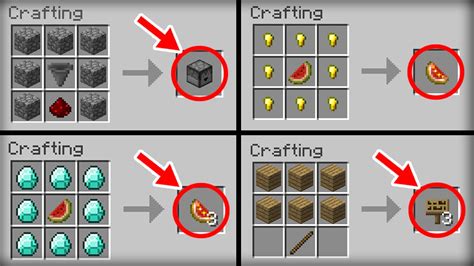A Not-Op Recipe Viewer for Minecraft: A Guide to Crafting Your Own
So, you're tired of constantly looking up Minecraft recipes? You want a convenient, in-game way to check crafting recipes without resorting to external websites or constantly opening your crafting table? You've come to the right place! This guide will walk you through creating your very own, non-operational (not-op) recipe viewer in Minecraft. We'll focus on simplicity and clarity, making this accessible even to newer players.
What is a Not-Op Recipe Viewer?
A not-op recipe viewer in Minecraft is essentially a visually appealing and organized display of crafting recipes. Unlike mods or data packs that alter the game's functionality, this method uses in-game items to represent recipes. Think of it as a personalized, offline recipe book. This approach keeps things completely vanilla, ensuring compatibility with any Minecraft version and server.
Materials You'll Need
To create your not-op recipe viewer, you'll need a variety of readily available materials. These could include:
- Item Frames: These are crucial for displaying the crafting ingredients. You'll need a significant number depending on the recipes you want to include.
- Name Tags: These allow you to label each item in the item frames, clearly identifying the recipe and its components.
- Signs: Use these to create headings and organize your recipe displays. You can clearly label sections such as "Tools," "Weapons," "Food," etc.
- Building Blocks: Choose building blocks that complement your style and provide a clean background for your item frames and signs. Consider using something visually appealing and easy to work with.
Building Your Recipe Viewer
This is where your creativity comes in. There’s no single "right" way to construct your recipe viewer; the possibilities are endless! Here's a suggested approach:
1. Planning and Organization
Before you start building, plan the layout. Decide which recipes you want to include and how you will categorize them. A logical organization is key to easy navigation. Consider grouping items by functionality (e.g., tools, blocks, food) or material (e.g., wood, stone, iron). Sketching a basic layout on paper might help.
2. Constructing the Display Area
Create a visually appealing area using your chosen building blocks. Make it large enough to comfortably hold all the item frames and signs you need. Ensure adequate spacing between elements for easy readability.
3. Displaying Recipes
For each recipe, use multiple item frames to show the required ingredients. Place them in an arrangement that clearly mimics the crafting grid. Use name tags to identify each item, especially if multiple items use similar blocks (e.g., different colored wool). Remember, you're not actually crafting anything here; you're just displaying the ingredients needed.
4. Adding Labels and Organization
Use signs to add clear labels and headings. For example, a sign could read "Crafting Recipes: Tools." This adds clarity and makes finding specific recipes easier. You can also consider color-coding your sections or using different types of blocks to visually distinguish different recipe categories.
Tips and Enhancements
- Creative Use of Space: Use vertical space to display multiple recipe grids. Consider using stairs or slabs for more visually interesting layouts.
- Aesthetic Considerations: Choose building blocks that are aesthetically pleasing and match the overall design of your Minecraft world.
- Expandability: Design your viewer with expansion in mind. You should easily be able to add more recipes as needed without major renovations.
- Version Control: Consider labeling your creation with your Minecraft version, particularly if you plan to share your design with others.
Building a not-op recipe viewer is a great way to improve your in-game experience and organize your crafting knowledge. It's a fun, creative project that demonstrates your understanding of Minecraft crafting and allows for personalization. Get crafting!
